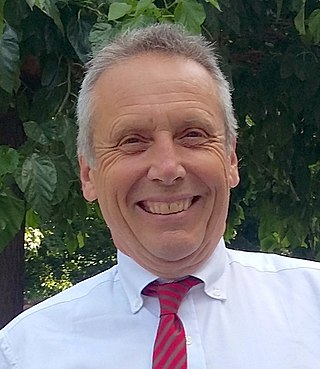
The Smithsonian Astrophysical Observatory (SAO) is a research institute of the Smithsonian Institution, concentrating on astrophysical studies including galactic and extragalactic astronomy, cosmology, solar, earth and planetary sciences, theory and instrumentation, using observations at wavelengths from the highest energy gamma rays to the radio, along with gravitational waves. Established in Washington, D.C., in 1890, the SAO moved its headquarters in 1955 to Cambridge, Massachusetts, where its research is a collaboration with the Harvard College Observatory (HCO) and the Harvard University Department of Astronomy. In 1973, the Smithsonian and Harvard formalized the collaboration as the Center for Astrophysics | Harvard & Smithsonian (CfA) under a single Director.

Yousef Sobouti is a contemporary Iranian astrophysicist, theoretical physicist.
Ralph E. Pudritz is a theoretical astrophysicist tenured at McMaster University in Hamilton, Ontario, Canada. He is an expert in the field of astrophysical jets, particularly those involved in star formation.

The Dominion Radio Astrophysical Observatory is a research facility founded in 1960 and located at Kaleden, British Columbia, Canada. The site houses four radio telescopes: an interferometric radio telescope, a 26-m single-dish antenna, a solar flux monitor, and the Canadian Hydrogen Intensity Mapping Experiment (CHIME) — as well as support engineering laboratories. The DRAO is operated by the Herzberg Institute of Astrophysics of the National Research Council of the Government of Canada. The observatory was named an IEEE Milestone for first radio astronomical observations using VLBI.

The Algonquin Radio Observatory (ARO) is a radio observatory located in Algonquin Provincial Park in Ontario, Canada. It opened in 1959 in order to host a number of the National Research Council of Canada's (NRC) ongoing experiments in a more radio-quiet location than Ottawa.

The Universities Space Research Association (USRA) was incorporated on March 12, 1969, in Washington, D.C. as a private, nonprofit corporation under the auspices of the National Academy of Sciences (NAS). Institutional membership in the association currently stands at 113 universities. All member institutions have graduate programs in space sciences or technology. Besides the 98 member institutions in the United States, there are two member institutions in Canada, four in Europe, two in Israel, one in Australia and one in New Zealand, one in Hong Kong, two in Korea and two in the United Kingdom.
Scott Duncan Tremaine is a Canadian-born astrophysicist. He is a fellow of the Royal Society of London, the Royal Society of Canada and the National Academy of Sciences. Tremaine is widely regarded as one of the world's leading astrophysicists for his contributions to the theory of Solar System and galactic dynamics. Tremaine is the namesake of asteroid 3806 Tremaine. He is credited with coining the name "Kuiper belt".
This article outlines the history of natural scientific research in Canada, including physics, astronomy, space science, geology, oceanography, chemistry, biology, and medical research. Neither the social sciences nor the formal sciences are treated here.

The Department of Physics at Durham University in Durham, England, is a physics and astronomy department involved in both undergraduate and postgraduate teaching and scientific research.
Alan Bernstein is Professor Emeritus at the University of Toronto and President Emeritus of CIFAR, where he served as President and CEO from 2012 to 2022. A Distinguished Fellow at the Munk School of Global Affairs and Public Policy, he is also a Fellow and Member of the Standing Committee for Science Planning at the International Science Council (2022-2025). Bernstein is recognized as a leader in health research, science policy, mentorship and organizational leadership.

Wendy Laurel Freedman is a Canadian-American astronomer, best known for her measurement of the Hubble constant, and as director of the Carnegie Observatories in Pasadena, California, and Las Campanas, Chile. She is now the John & Marion Sullivan University Professor of Astronomy and Astrophysics at the University of Chicago. Her principal research interests are in observational cosmology, focusing on measuring both the current and past expansion rates of the universe, and on characterizing the nature of dark energy.

John Richard Bond, also known as J. Richard Bond, is a Canadian astrophysicist and cosmologist.
Brenda Jean Andrews is a Canadian academic, researcher and biologist specializing in systems biology and molecular genetics.

Vassiliki Kalogera is a Greek astrophysicist. She is a professor at Northwestern University and the Director of the Center for Interdisciplinary Exploration and Research in Astrophysics (CIERA). She is a leading member of the LIGO Collaboration that observed gravitational waves in 2015.

Nicholas Kaiser was a British cosmologist.
Ue-Li Pen is a Canadian astrophysicist, cosmologist, and computational physicist.
The Dunlap Institute for Astronomy and Astrophysics at the University of Toronto is an astronomical research centre.
Juna Kollmeier is an astrophysicist from the US. She is currently employed at the Carnegie Institution for Science and is the director of the fifth phase of the Sloan Digital Sky Survey, which made its first observations in October, 2020. She has been named Director of the Canadian Institute for Theoretical Astrophysics, located at the University of Toronto, and will take up this position in July, 2021.

Renée Hložek is a South African cosmologist, Professor of Astronomy & Astrophysics at the Dunlap Institute for Astronomy & Astrophysics at the University of Toronto, and an Azrieli Global Scholar within the Canadian Institute for Advanced Research. She studies the cosmic microwave background, Type Ia supernova and baryon acoustic oscillations. She is a Senior TED Fellow and was made a Sloan Research Fellow in 2020. Hložek identifies as bisexual.
Christopher Thompson is a Canadian astronomer and astrophysicist. He is a professor of astronomy at the University of Toronto Canadian Institute for Theoretical Astrophysics (CITA).












